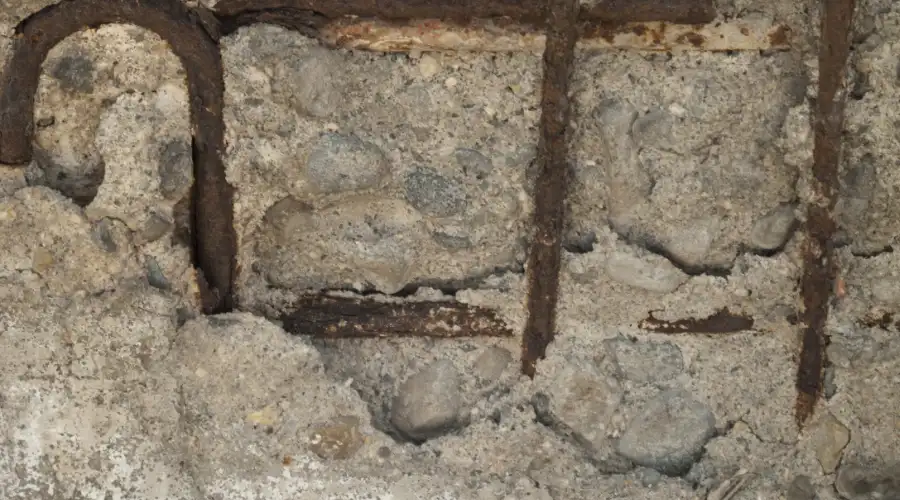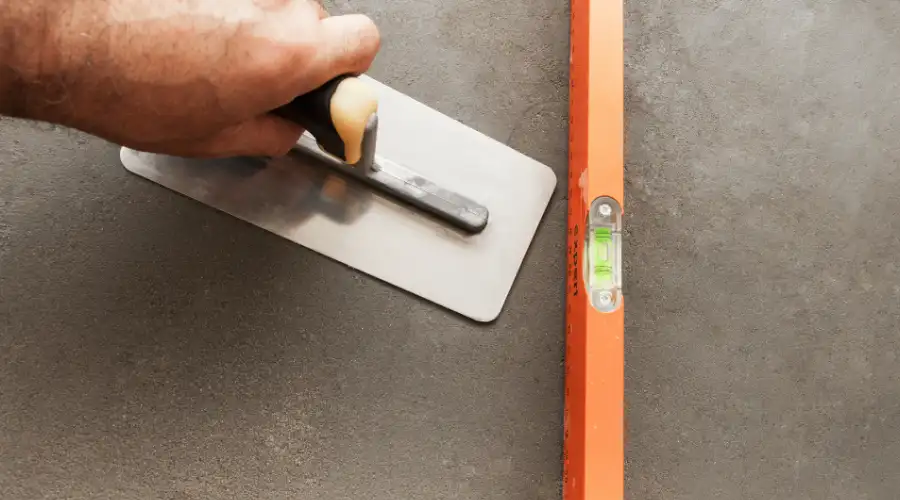Concrete is a vital and valued building material in today’s constructed environment due to its wide availability, strength, flexibility, and durability. While, despite being durable, concrete is not degradation-proof. There are many forms of concrete damage, and the propagation of the damage mechanisms can be caused by a range of physical, chemical, and environmental factors. Each type of degradation can diminish the serviceability of concrete and create unsafe conditions, exceed maintenance budgets or reduce service life. For engineers, property developers and homeowner, gaining an understanding of the various causes, mechanisms and prevention of concrete deterioration could be valuable.
What is Concrete Deterioration
Concrete deterioration refers to the damage or degradation of concrete caused by physical, chemical, or environmental processes. This results in a reduction in the structural integrity, load-bearing capacity, and aesthetic value. Common signs of deterioration include cracking, spalling, scaling, discolouration, corrosion of reinforcement, and surface erosion.
The extent and rate of deterioration are influenced by factors such as the quality of materials and workmanship, environmental conditions (e.g., exposure to chlorides, freeze-thaw cycles), and maintenance practices. Early identification and appropriate repair measures are essential to mitigate risks and extend the service life of concrete structures.
Key Causes of Concrete Deterioration

Chemical Attack: Aggressive chemical agents, such as sulfates, chlorides, and acids can react with concrete, resulting in expansive products and deterioration of the cement matrix. They also speed the corrosion and deterioration of embedded reinforcement steel, which weakens structural performance.
Physical Stress: Physical destruction is from freeze-thaw cycles, abrasion and mechanical loading, causing cracking, scaling, or loss of depth of wear. The deterioration from stress progressively removes concrete and decreases load-bearing capacity of the structure.
Bad Construction Practices: Improper mixing, poor curing and compaction can lead to porous and weak concrete that is easily damaged and deteriorates rapidly. These deficiencies enable the early onset of cracks and allow the ingress of aggressive agents.
Environmental exposure: Environmental exposure, including moisture, humi dity, temperature changes,and de-icing salts, intensifies both chemical and physical deterioration. Seawater, rich in chlorides and sulfates, and acid rain, which lowers pH, further contribute to the degradation of concrete and reinforcement.
Corrosion of reinforcements: Corrosion of reinforcement occurs when chloride ingress or carbonation lowers the concrete’s pH, destroying the protective passive film around embedded steel. As steel corrodes and expands, it causes internal pressure, leading to cracking, delamination, and spalling of the surrounding concrete.
Carbonation: Carbonation occurs when atmospheric carbon dioxide interacts with hydrated cement paste to neutralize the concrete pH and destroy a passive layer that is formed to protect steel reinforcement. Significant corrosion of embedded steel will occur and can be the broker of structural damage.
Familiarity with these factors is important for the proper diagnosis and repair of the deterioration, as well as prevention of future deterioration of concrete members.
Mechanisms of Damage
Concrete deterioration occurs in many interrelated ways
1. Reinforcement Corrosion
When chlorides or carbon dioxide intrude into concrete, the passivated layer provided by steel reinforcing is compromised. The corrosion products (rust) occupy greater volumes than the steel and generate internal pressure, cracks, and ultimately spalling of concrete.
2. Freeze-Thaw Damage
Water present in the pore structure of concrete expands upon freezing, causing internal stress. Repeated cycles of freeze-thaw can cause surface scaling, cracking, and material loss in concrete, particularly in poorly air-entrained concrete.
3. Sulfate Attack
Sulfates in groundwater or soils react with the products of cement hydration to produce expansive compounds such as ettringite. Resulting in cracking, softening and disintegration.
4. Alkali-Aggregate Reaction (AAR)
Alkali-Aggregate Reaction (AAR), particularly the Alkali-Silica Reaction (ASR), occurs when alkali hydroxides in cement react with reactive silica in certain aggregates. This reaction produces an alkali-silica gel that absorbs water and swells, causing internal stress, cracking, and expansion within the concrete.
5. Abrasion and Erosion
Mechanical action from traffic, machinery, or flowing water can degrade or wear away the concrete surface, leaving exposed aggregates and reducing the thickness of the concrete.
Repair Methods of Concrete Deterioration

Repairing concrete that has deteriorated normally involves correct diagnosis and method selection; following are some methods that are commonly employed for concrete repair
- Crack Injection: Cracks are injected with low-viscosity epoxy or polyurethane resins to restore structural integrity and maintain a moisture barrier in the structure.
- Surface Patching: Damaged concrete is removed, and repair mortars or concrete is installed to repair such areas. The replacement material should be compatible with the existing concrete.
- Cathodic Protection: This involves the installation of sacrificial anodes or impressed current systems to control corrosion of embedded reinforcement by making it the cathode of an electrochemical cell. It is especially useful in marine or chloride-contaminated environments.
- Realkalization and Chloride Extraction: Electrochemical techniques are used to either restore alkalinity to the concrete or to remove chlorides from the reinforcement zone.
- Overlay and Coatings: The surface is prepared, and a protective overlay or coating is installed to enhance durability and prevent further ingress of harmful agents.
- Replacement: In the most severe cases, some structural elements must be replaced either entirely or in part.
Good surface preparation, material selection, and quality control, normal to all material applications, are necessary to achieve cementitious repair success in the long term.
Preventive Measures for Concrete Deterioration
Preventive measures are always more effective than corrective ones. Key strategies for prevention are outlined below.
- High Quality Materials: Low permeable, high strength concrete, and reinforcement that is not subject to corrosion.
- Good Design: Adequate cover to the reinforcement, detailing for drainage, and the use of air-entrainment in freeze-thaw conditions.
- Protection Treatments: Sealers, membranes, and corrosion inhibitors should be applied to exposed surfaces.
- Control of Environmental Exposure: Limit the exposure of de-icing salts and aggressive chemicals.
- Good Construction Practices: Mixing, placing, compacting, and curing the concrete, will ensure the concrete is dense and durable.
- Acceptable Inspection Practice: Implement a schedule for inspecting for potential issues; the sooner they are detected, the better.
Maintenance & Monitoring
Continuous maintenance and monitoring are crucial for ensuring maximum longevity of concrete structures.
- Routine Inspections: Identifying obvious issues (through visual inspection or non-destructive testing) at the outset is by far the best strategy to prevent extensive damage.
- Condition Assessment: Periodic assessments using specific techniques, such as, ultrasonic pulse velocity, half-cell potential, coring, etc.
- Preventive Maintenance: Maintenance responsible for ensuring that all cracks are sealed watertight, that all drainage systems are cleaned, and that coatings are reapplied.
- Documentation: Maintain records for all inspections, repairs, and maintenance to help future interventions.
Conclusion
Concrete deterioration is a complicated multiprocess and multi-step process that, if not considered, can jeopardize the safety and operability of the structures. Understanding the causes and processes involved in deterioration, as well as the repair and maintenance strategies, is crucial for both engineers and owners. Applying good construction prcatices, tractable maintenance, and good intervention can significantly extend the durability and performance of concrete structures.
Frequently Asked Questions (FAQ)
Common signs include cracking, spalling, discoloration, surface scaling, and exposed reinforcement.
Prevention involves using high-quality materials, proper design and construction practices, protective treatments, and regular maintenance.
Yes, depending on the extent of damage, repair methods range from crack injection and patching to complete replacement of structural elements.
Inspection frequency depends on exposure conditions and structure type, but annual visual inspections and periodic detailed assessments are recommended.
Corrosion of steel reinforcement is a primary cause of structural damage, leading to cracking, spalling, and loss of load-bearing capacity.

